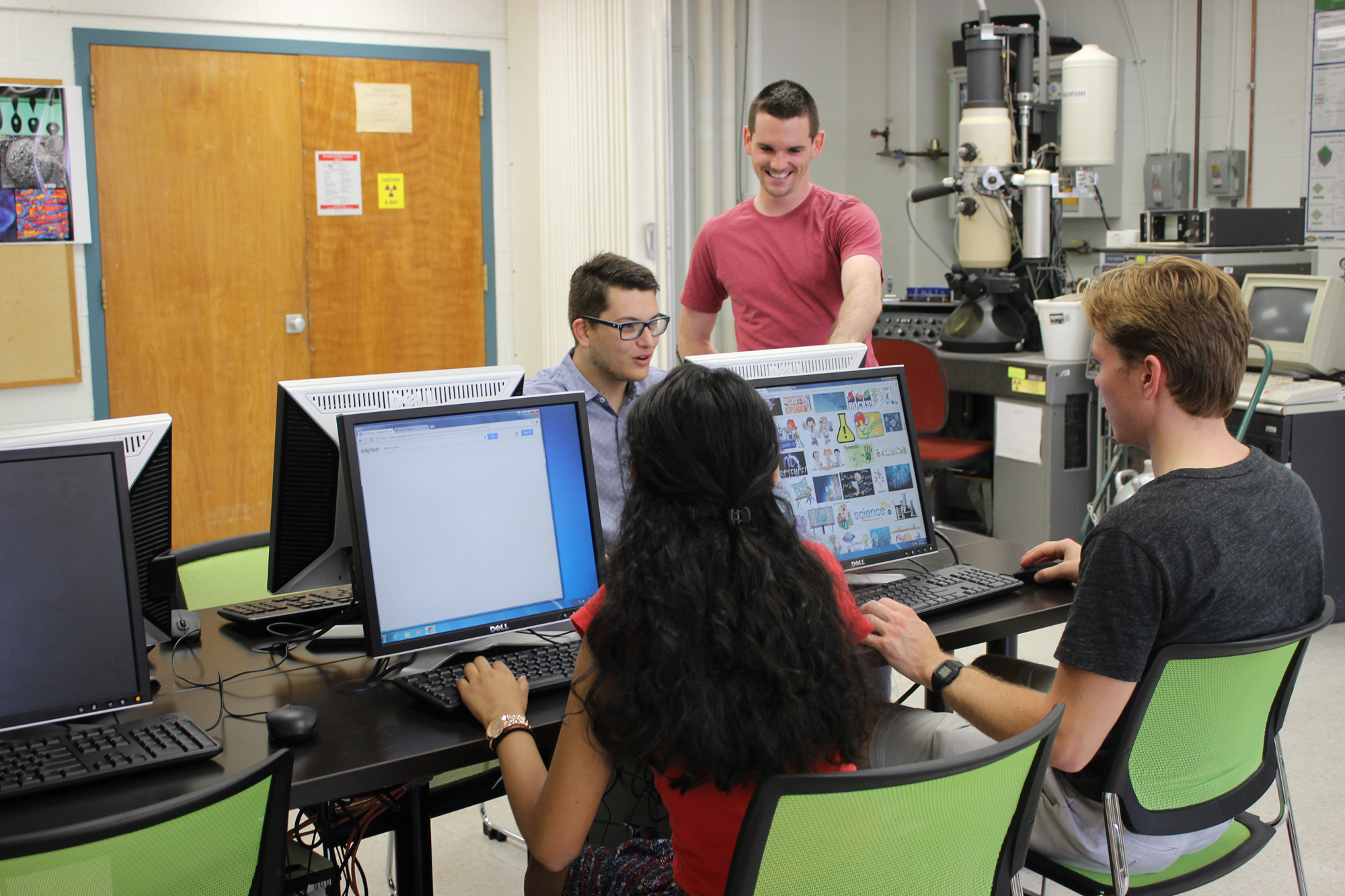Technical Associate, Adam Wentworth Successfully Fulfills Many Roles Within MSE
By Amanda Olavarria
Researching, installing, maintaining and calibrating equipment are just some of the many responsibilities Adam Wentworth carries out as a technical associate of the material science and engineering department (MSE). He also instructs, trains, consults and supervises students in four different MSE undergraduate teaching labs.
Among Adam’s many roles he is also a dedicated researcher. His interest in additive manufacturing (AM) developed during graduate school while exploring possible research areas. Specifically, Adam became interested in additive manufacturing’s relation to healthcare and aerospace. This led him to obtain computer-aided drafting (CAD) certifications and to become proficient in the process of additive manufacturing.
Additive manufacturing provided Adam the opportunity to collaborate with many professors for research. He worked with Assistant Professor Savas Tasoglu in mechanical engineering by mechanical testing AM samples and Associate Professor Sangamesh Kumbar of UConn Health Center by additive manufacturing a biomaterial into complex configurations used to repair critically damaged nerves. Since additive manufacturing lends itself well to many fields, it has allowed Adam to gain exposure to these and other varied fields and to grow his research experience.

Six new workstations complement the MSE undergraduate teaching lab, providing space for group projects and lab instruction. From left to right, undergraduate students Dale Gouveia, Rima Viradia, Laboratory Manager Adam Wentworth, and undergraduate student Rory Fahy
Adam, originally a computer science and engineering major, made the shift to materials science and engineering after attending an Engineering 1000 presentation given by a former MSE faculty member. This lecture explained materials and the discovery of material properties as the source of all the things we interact with. The Engineering 1000 presentation and the opportunity to solve problems in a creative way attracted Adam to the field of MSE.
During his junior year, while interning in Professor Hebert’s lab, Adam attained hands-on-research experience and critical thinking skills by analyzing the relationships between how a material performs and what the characterization data shows. “Each new material presents some unique structure and data that is waiting for this connection to be made, and the deep understanding of this I think is at the heart of material discovery,” Adam explained.
In 2009, Adam received his bachelors in materials science and engineering at UConn and later his masters in 2011. After completing his education, his desire to impact and inspire future engineers led him to become a technical associate at UConn. The position grants him the opportunity to be in a research environment while continuing to learn. Thanks to his supervisors since then, Professors Carter and Alpay, he was given independence and responsibility to develop the labs.
In conjunction with overseeing MSE labs, Adam also helps teach the recently added, innovative course entitled “Intro to 3D Building: Learn by Building.” The course was introduced after ME/IMS Assistant Professor Chen applied for the Provost Teaching Innovation Grant and asked Adam to Co-PI. Adam said, “I felt excited to share my interest of 3D printing with an eager bunch of ME/MSE seniors.” In this course, students build 3D printer kits, learn about current industrial and research activity, 3D scanning, and operating and troubleshooting printers.
Adam has received a number of acknowledgments for his work including the NASA XHAB grant (2016), Teaching Innovation grant (2015), and acceptance to exhibit at Maker Faire (2014-2017). He has also co-authored many publications including “High-Throughput Rapid Prototyping of Low-Cost Paper-Based Microfluidics,” “ 3D Scanning and 3D Printing Applications for Documenting Archeological Materials”, and “Polymeric 3D Printed Structures for Soft Tissue Engineering.”
This coming semester, Adam looks forward to the completion of the new Innovation Partnership Building and is excited to see new company partnerships and research activity, which will provide more opportunities for MSE students, academia and local industry.
Since MSE is a diverse major with many different areas to explore, Adam advises that current and potential MSE students “take advantage of extracurricular activities to network and gain opportunities to discover interests.” He believes that getting involved is key to advancing in the field of materials science and engineering.
Published: March 9, 2018
Categories: news, research, teaching, undergraduate students
Available Archives
